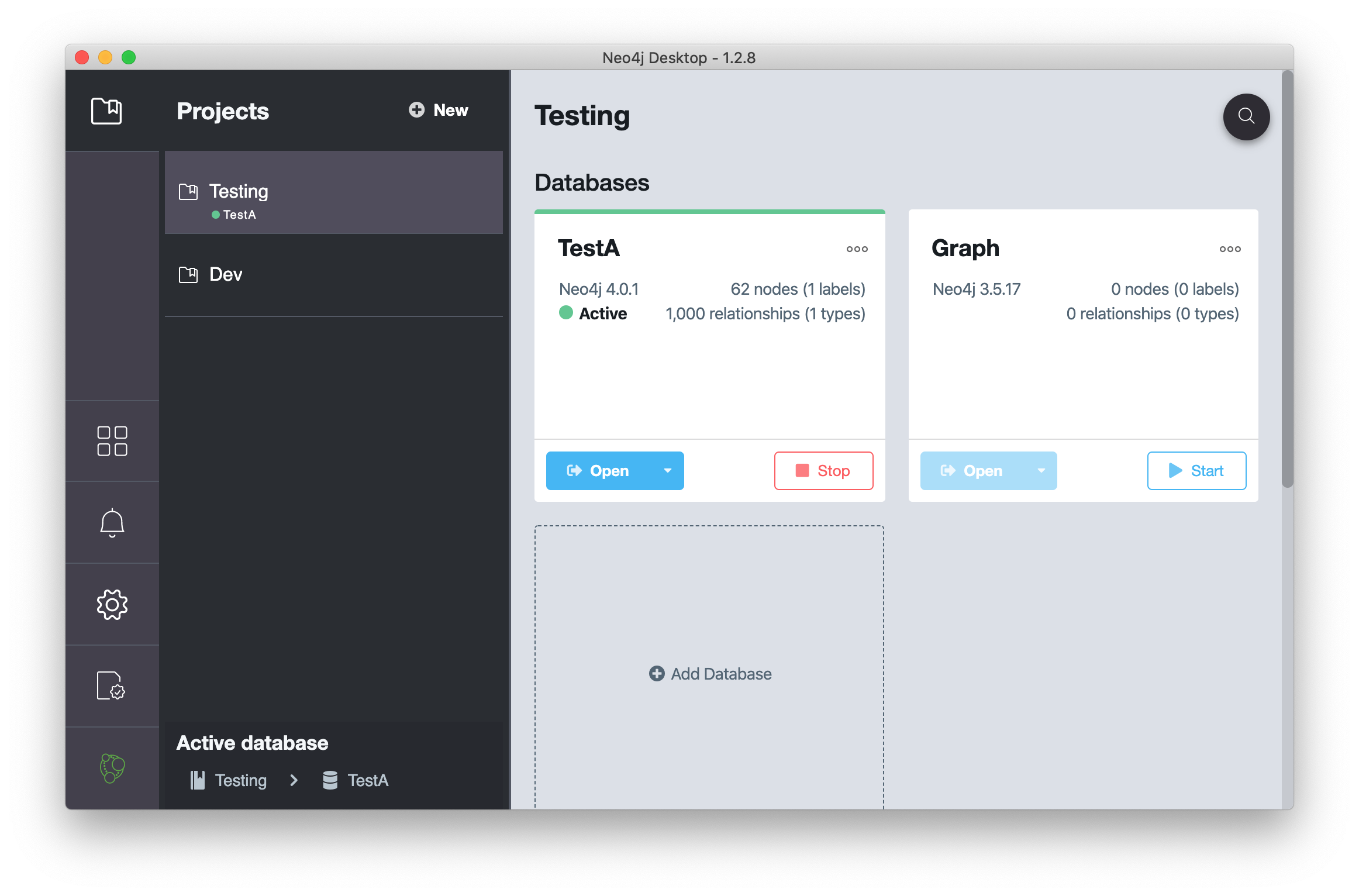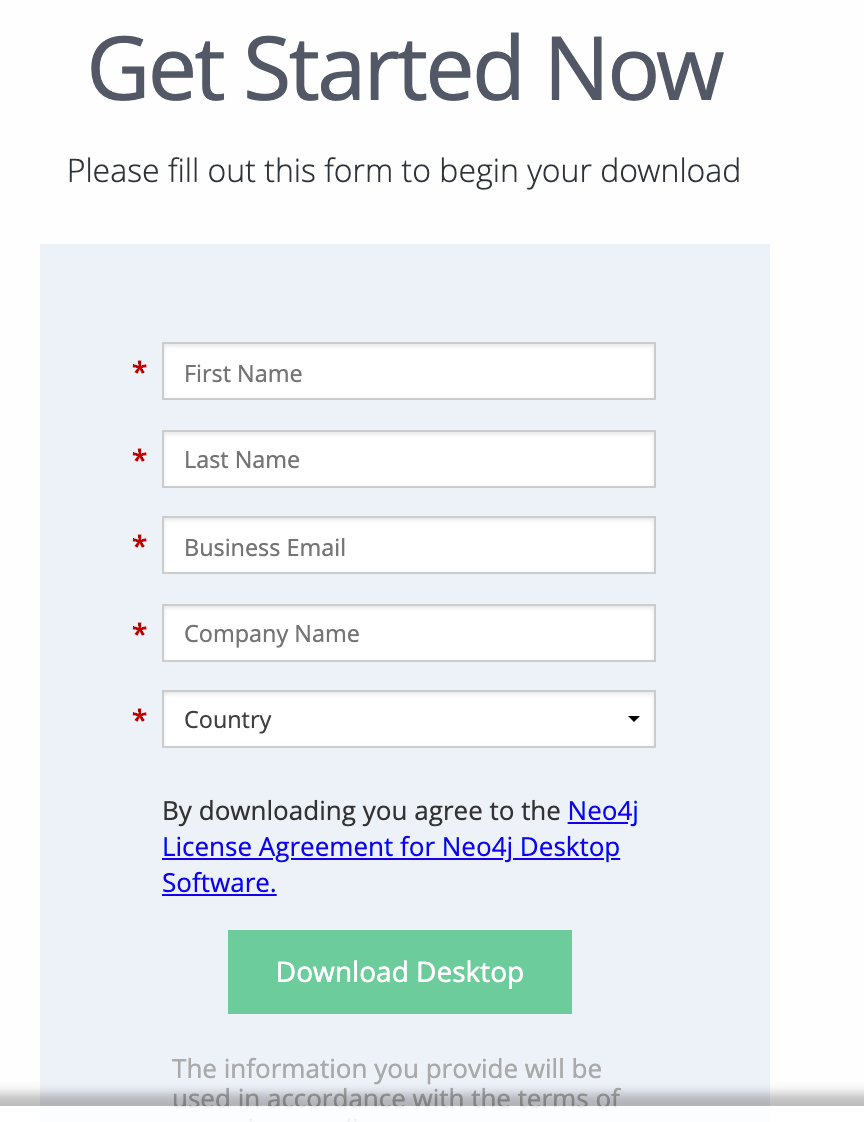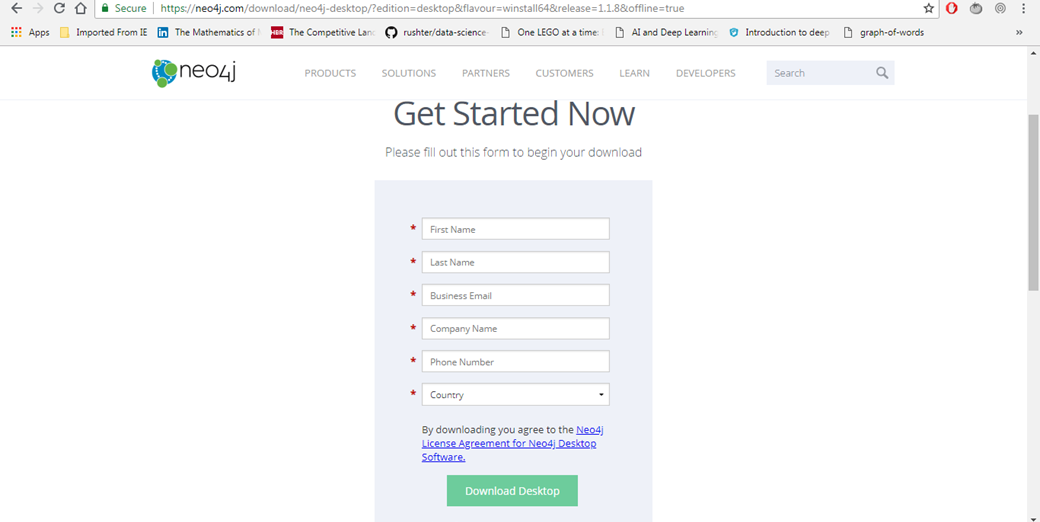
- #Download neo4j desktop for mac os
- #Download neo4j desktop full
- #Download neo4j desktop code
- #Download neo4j desktop password
I’ve found Neo4j docs, dev community, tutorials, the whole ecosystem to be super robust. The reason for this post Existing info on Neo4j Desktop from command line is a bit lightĪs a caveat, if I was a more experienced dev, this all might have been super easy and intuitive but it took some time so I wanted to document. If something doesn’t do what we wanted, there’s no “undo” button, we have to wipe the db with a “MATCH (n) DETACH DELETE n” and start over from step 1. If you’re working from Neo4j Desktop UI exclusively, you’ll find yourself favoriting scripts, moving them around in folders, constantly hitting the play button, editing file paths, etc., as needed, basically looping manually through the same ten steps with minor variations running single line commands
#Download neo4j desktop full
But pretty quickly you can get to a point of having outgrown single line commands, but not being ready for full blown deployment. With Desktop UI, we’re limited to running one query at a time.

At a certain point, you’re ready to deploy, and migrate from using a Desktop instance to a Server instance. The Neo4j Desktop Browser UI is intended for local development when you’re starting out. When should you start using the command line? When to use cypher-shell on local When you’ve outgrown Neo4j Desktop Browser UI but aren’t ready for deployment with Neo4j Server

#Download neo4j desktop for mac os
#Download neo4j desktop password
Run $ cat //.cypher | bin/cypher-shell -u username -p password.txt file, separating lines with semicolons To run your multi-line script, save as a.
#Download neo4j desktop code

Fire up Neo4j Desktop (for Mac OS X) and run your database.

Running multi-line cypher script via CLI is a good middle level approach between starting out and a full deployment solution.


 0 kommentar(er)
0 kommentar(er)
